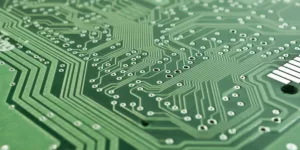Printed circuit manufacturing and assembly are two different “worlds”, usually performed by distinct and different companies. This is because each discipline requires a set of processes that are unique and specific; manufacturing PCBs require a different set of systems and tools than PCB assembly does. In order to make sure that the printed circuit board assembly process (component placement) goes off without a hitch, here are several tips.
1. Communication
PCB assemblers have an unlimited amount of suggestions for designing boards effectively; and are great resources for uncovering new product techniques. Keep your assembler in the loop as you move about the manufacturing process.
2. Design
In order to minimize the amount of problems that occur during assembly, it is generally wise to stick to a few time-tested principles. The first of these principles is to specify the weight of your copper and the preferred PCB finish. It is also wise to add 3 (no more) Fiducials to the corners of your PCB, and there should be a common component orientation—preferably on the primary side—in order to ensure everything runs as smoothly as possible (and, in addition, using surface mount components wouldn’t hurt, either).
3. Production Cost
In many cases, offshoring printed circuit board assembly is the right thing to do to reduce production cost, time and need to hire expertise for the same. There are, however, a few risk factors that come into play which you should also need to keep in mind.
The biggest risk you can think of it is below-par (or counterfeit) parts when assemblers seek ways to cut corners and costs, imitation parts or sub-standard equipment is used in lieu of standard parts; so a quality assurance team of yours should cross-verify the quality. Another risk is the possibility of having your product launch delayed due to shipping problems, that is why always keep few extra days in your hand for unforeseen events.
4. Suppliers
Do you know the ins-and-outs of your PCB supplier’s steps data? (Ideally, there should be a minimum of 2mm between adjacent boards). When you understand their steps data, figuring out how to optimize panel layouts will be a cinch. It’s easier to remember that smaller panels are easier to handle (for inspections). Remember the adage: bigger is not always better. That could not be truer in our world.
5. Labeling
Are there markings on the components in your designs? If not, labeling them is painless and takes no time to do. This saves you from making a tragic mistake later on, as not every manufacturer you deal with marks parts similarly. The best way to organize them to avoid confusion is to number and label them and them match them with your design documents.
6. Panel Efficiency
The only way you can reduce cost is to make sure that panel efficiency is up to snuff. This means being absolutely certain about the tiniest, seemingly-insignificant chances to PCB size. This is why it is important to be familiar with standard panel sizes such as 406mm x 508mm and 305mm x 457mm for maximum efficiency.
7. Problem Reduction
Solder assembly is rife with problems. Nominal density IPC-7351B/C-compliant footprints reduce these problems; as do well-designed component footprints. (If they’re less than 10mm in length. For anything taller, courtyards adjacent to each other must have an extra 0.5mm in space.)
Conclusion
The design process of any electronic process can be heavy and full of problems – many of them testing patience and focus. Hopefully you won’t experience a lot of cases of production factors that prevent drastic measures during PCB design, production and assembly.








